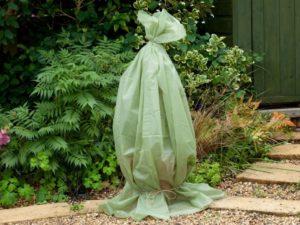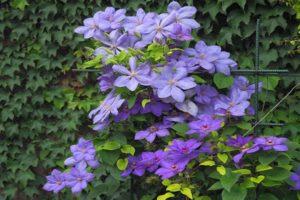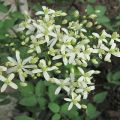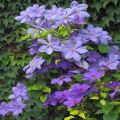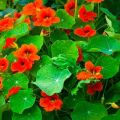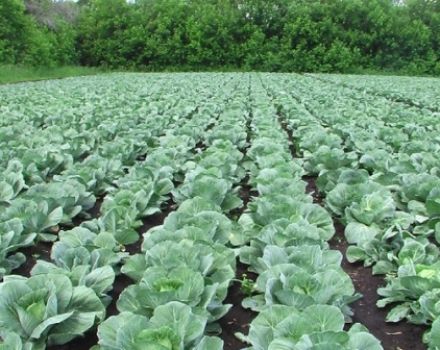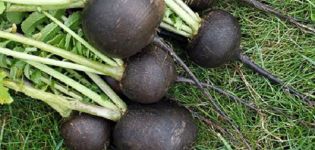Description and characteristics of Zhakman clematis, planting and care rules
The cultivation of clematis Zhakman has a number of features. This beautiful ornamental culture is very popular with gardeners. To succeed in growing a shrub and get abundant flowering, it is worth taking proper care of the plant. It is recommended to water it in a timely manner, feed it, cut it off. Protection against diseases and pests is also important.
General description of the group
This is a climbing liana, which reaches 4-5 meters in height. It is characterized by a ribbed brown-gray stem covered with fluff. The leaves reach 10 centimeters and are dark green in color. Single flowers can have different shades - pink, red, white, blue, purple.
In temperate climates, bud swelling occurs at the end of April, and leaves appear in the first half of May. The culture is characterized by abundant and long flowering, which occurs in June-August.
Pros and cons
The advantages of culture include the following:
- excellent decorative properties;
- variety of varieties;
- unpretentious care;
- the possibility of using in landscape design.
The only drawback of culture is the susceptibility to certain diseases. She often suffers from fungal infections.
Clematis varieties of the Zhakman group
Today there are many varieties of Jackmanii clematis. They differ in appearance and care.
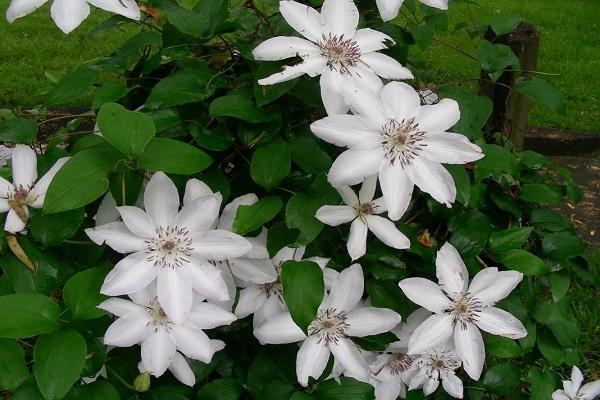
Superba
This vine can reach 3 meters. It is characterized by velvety purple inflorescences. In the central part there is a purple stripe, which fades as the flower ages. The variety is characterized by medium frost resistance.
Rouge cardinal
This hybrid is distinguished by large velvety flowers of a rich purple hue with light stamens. Branches reach 2 meters. The leaf plates are medium in size and dark green in color.
Cosmic Melody
This shrub vine is capable of reaching 3 meters. Bushes include 15-30 shoots. Each of them has 10-30 flowers. They are distinguished by a diamond shape and a violet-cherry color.
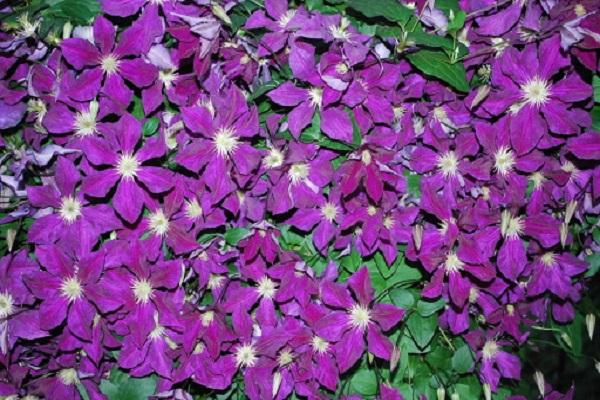
Luther Burbank
This variety is characterized by large inflorescences reaching 20 centimeters in diameter. Liana can grow up to 2.5-4 meters.The flowers are purple-purple in color and have wavy petals.
Anna German
This plant reaches 2.5 meters and is highly resistant to frost. The bushes are able to withstand temperatures as low as -40 degrees. The flowers are large and light purple in color.
Gypsy Queen
This shrub vine grows up to 3.5 meters in height. It is characterized by slightly raised buds. The flowers are dark purple in color and reach 15 centimeters.
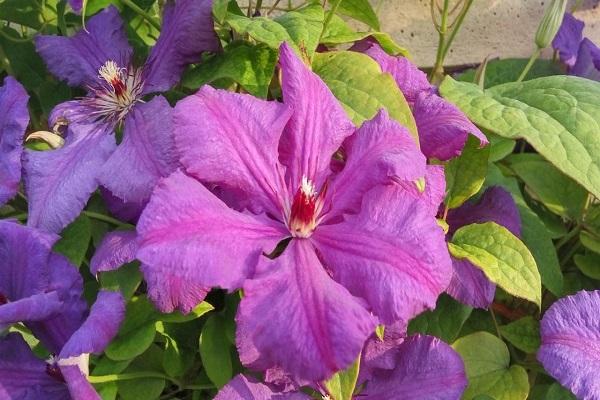
Nelly Moser
It is a deciduous liana, reaching 2.5 meters in height. The flowers are pink-lilac. There is a bright pink stripe in the center of the flowers. The plant is able to withstand frosts down to -35 degrees.
Moonlight
It is a vigorous plant that reaches 3 meters. It is characterized by complex leaves and beautiful lavender flowers. The culture should be grown in any climatic zones of Russia.
Texa
It is not a very tall plant, which allows it to be planted in containers and grown on the balcony. The flowers have a bluish tint and wavy edges.
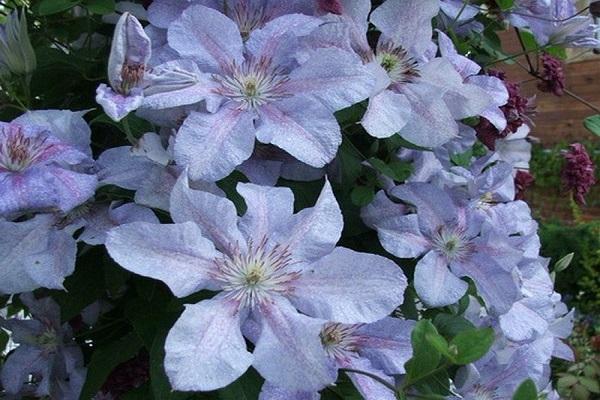
Ernest Markham
This plant has beautiful crimson flowers. This perennial vine reaches 3.5 meters and is characterized by frost resistance down to -35 degrees. The plant has large flowers up to 15 centimeters.
Growing recommendations
To succeed in growing a crop, it is worth providing it with high-quality and complete care.
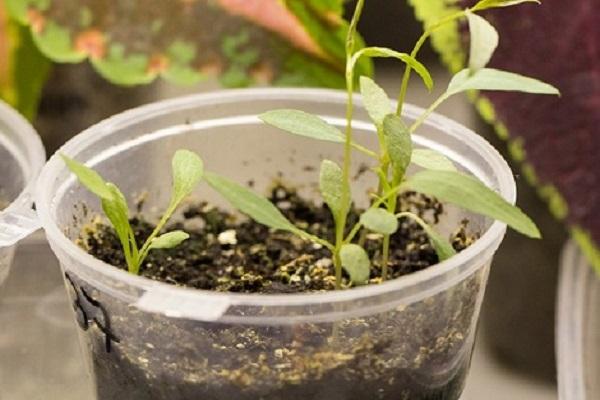
Selection and preparation of the landing site
Jacqueman's Clematis grows well near arches and arbors. Low-growing varieties can be planted in containers and grown on the balcony.
For planting in the ground, it is recommended to choose a sunny area. But the root zone should be shaded a little. It is best to plant the crop on a hill to avoid the death of long roots.
It is recommended to choose the right soil for the plant. It should include the following components:
- peat;
- humus;
- sand;
- dolomite flour;
- superphosphate.

Preparation of planting material
When buying clematis, it is worth considering the climate of the region. The planned landing site is also important. Tall plants are recommended to be planted near gazebos and supports, low ones - it is permissible to grow on the balcony.
The seedlings should be free of spots, areas of decay or signs of wilting. For plants with closed roots, the soil should be clean and moist.
Before planting, it is recommended to do the following:
- Carefully remove the seedlings from the containers. For this, the soil should be watered first.
- Soak seedlings with open roots in warm water for several hours.

Planting process
The size of the landing recesses depends on the volume of the earth clod. On average, they are made 60x60x60 centimeters.
To plant a plant, you should do the following:
- Place a drainage layer on the bottom. It should include small stones and crushed bricks.
- Fix the support at least 2.5 meters high.
- Put some soil on the drain to get a hill.
- Place the plant in the hole and gently spread the roots.
- Sprinkle the bush with soil and bury the root collar and a little trunk under the ground.
- Compact and water the soil.
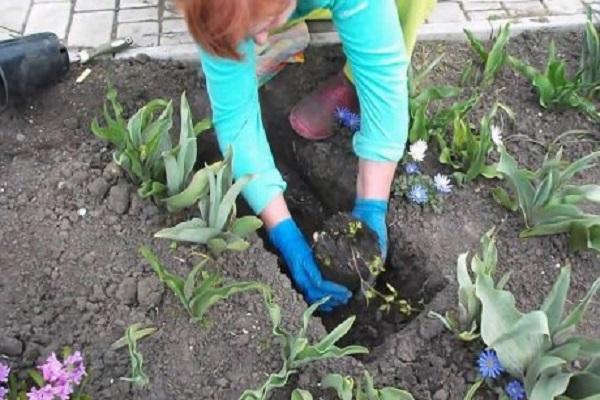
Care Tips
In order for the plant to develop normally, it is recommended to provide complete and high-quality care.
Top dressing and watering
Clematis of this variety is considered a moisture-loving crop. It is recommended to water it abundantly. It is worth carrying out the procedure once a week. 1 bush requires 30-40 liters of water. It is best to carry out the procedure in the evening.
No fertilization is required in the first year. From the second year it is worth starting feeding. During the period of active development, nitrogen agents are used, during the formation of buds, potassium-based formulations. After the end of flowering, phosphorus agents are used.
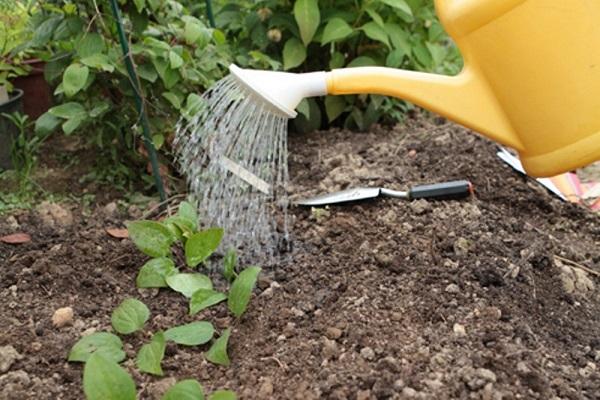
Mulching and loosening
The soil near clematis should be systematically loosened. Removal of weeds is also important. Due to loosening, it is possible to improve the supply of oxygen to the root system. It is recommended to mulch the soil after watering. It is recommended to use peat for this.
Pruning
For the first time, the bushes should be pruned in the summer. During this period, weak shoots are removed. Thanks to this, flowering on powerful shoots becomes more abundant. At the end of June, it is worth removing a quarter of the shoots. 3-4 nodes should remain on them. This will make the flowering last longer.
In autumn, at the first frost, all shoots are cut off. No more than 20-30 centimeters should remain above the ground. If this is not done, there is a risk of developing fungal infections, lack of flowering or death of the bush.

Diseases and pests
Clematis can suffer from fungal infections, bacterial pathologies or physiological disorders. Most often, the plant encounters powdery mildew, septoria and rust.
To avoid such problems, the culture is sprayed with copper or iron sulfate. It is also permissible to use a suspension of copper oxychloride.
Reproduction
Clematis should be propagated in different ways. For this, seeds, cuttings, dividing a bush or layering are used.
Seeds
The seeds of this culture can appear only with artificial pollination. Therefore, the seed method of reproduction is used exclusively by breeders.

By cuttings
The procedure is performed in June or July. This should be done in greenhouses and maintain a temperature of + 20-23 degrees. The cuttings should be of medium length and contain 2 knots. They are planted at a distance of 2 centimeters from each other.
By dividing the bush
This breeding method is used in the spring. The bush should be dug up together with the soil and divided into parts. Each of them must have buds and roots.
Layers
To implement this method, it is recommended to make a 5 cm depression. An escape should be placed in the hole. In this case, it is recommended to bring the upper part out and dig in. After a year, transplant to a permanent place.
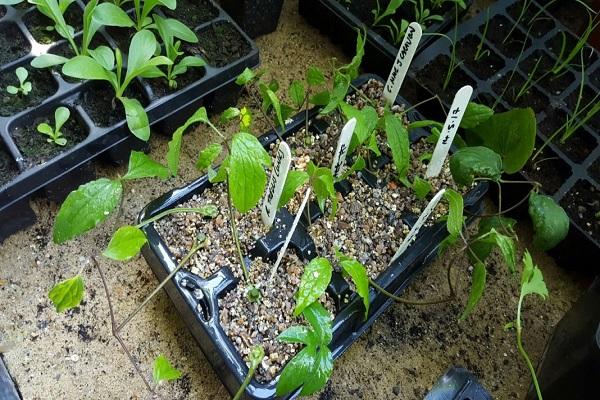
Application in landscape design
Tall plants should be used to decorate buildings, stairs, gazebos. Low varieties are suitable for decorating trellises and trellises. Straight lines are used to decorate lawns.
Clematis Zhakmana has excellent decorative properties and can be used to decorate a garden plot. To achieve good results in growing a crop, it should provide quality care.
